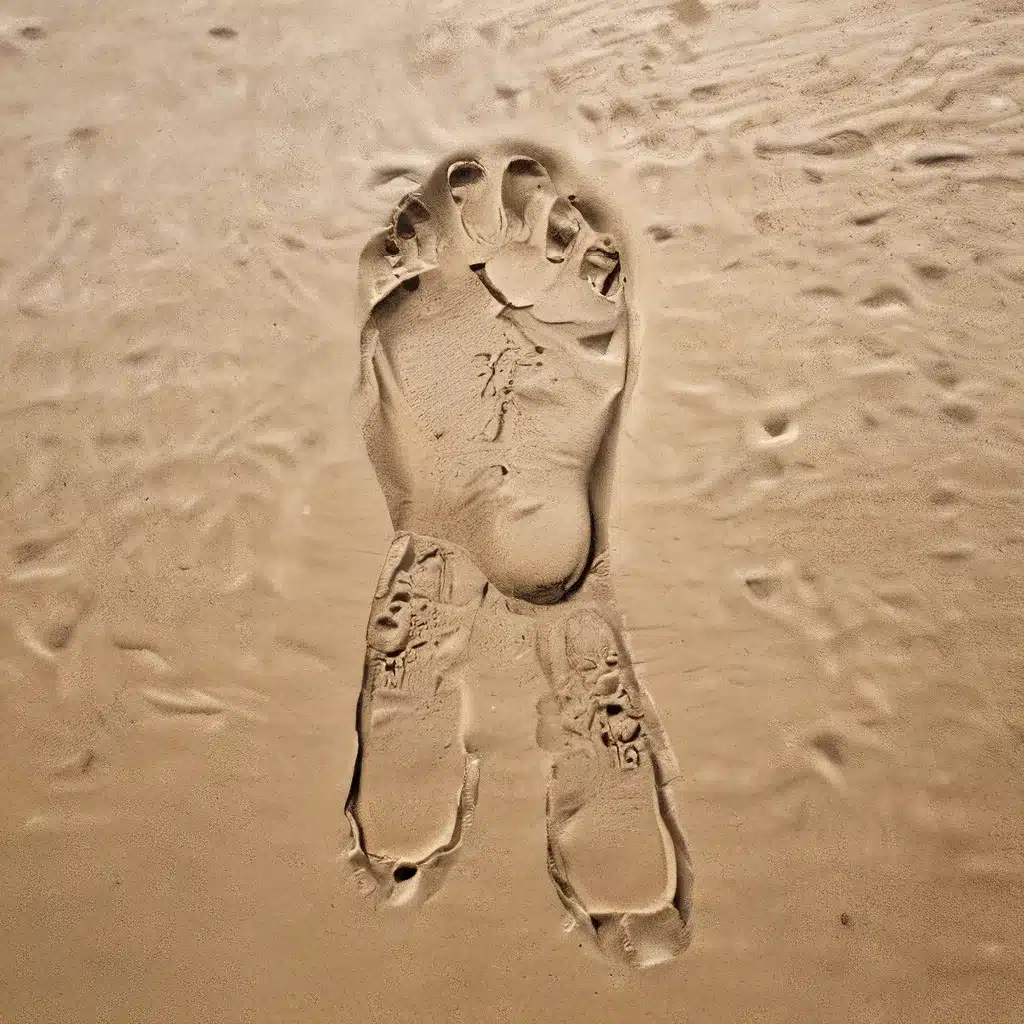
In the vast expanse of Earth’s history, buried beneath the shifting sands of time, lie the forgotten footprints of ancient explorers. These silent witnesses to the past hold the keys to unlocking the mysteries of long-lost civilizations, revealing the enduring resilience and ingenuity of our human ancestors.
Uncovering the Secrets of White Sands National Park
One such remarkable archaeological treasure trove is found at White Sands National Park in New Mexico. Nestled within the Tularosa Basin, this breathtaking landscape is home to an extraordinary array of fossilized footprints that have captured the imagination of scholars and the public alike.
Tens of thousands of years ago, during the Ice Age, the Tularosa Basin was a vastly different place. Instead of the arid deserts we see today, the region was once dominated by a giant body of water known as Lake Otero. The climate was less harsh, and the vegetation was abundant, with grasslands stretching for miles that would have resembled the prairies of the Midwest rather than the rugged terrain of modern-day New Mexico.
It was against this lush, ancient backdrop that the footprints of these long-forgotten explorers were preserved, left behind as they traversed the shores of Lake Otero. These fossilized footprints have become a treasure trove for archaeologists and paleontologists, offering a rare glimpse into the lives and movements of our ancestors.
Deciphering the Footprints: Clues to Past Civilizations
Each footprint discovered at White Sands National Park is a testament to the resilience and adaptability of the human spirit. These ancient imprints hold the potential to unlock a wealth of information about the cultures, customs, and lifeways of the individuals who once roamed these lands.
By carefully analyzing the size, depth, and distribution of the footprints, researchers can gain insights into the physical characteristics, population dynamics, and even the social structures of these long-lost civilizations. The footprints may reveal the presence of hunting parties, family groups, or specialized activities, providing a tangible connection to the daily lives and movements of these ancestral peoples.
Moreover, the footprints can offer clues about the environmental conditions that once prevailed in the region, shedding light on the ecological challenges and adaptations that shaped the lives of these ancient explorers. By studying the fossilized plant and animal remains found alongside the footprints, scientists can reconstruct the landscape, climate, and resources that were available to these communities, painting a more comprehensive picture of their existence.
Unveiling New Theories and Discoveries
As researchers continue to delve into the mysteries of the White Sands National Park, exciting new theories and discoveries are emerging that challenge our traditional understanding of the past. Recent studies have suggested that these ancient footprints may have been left by a previously unknown or underexplored human species, potentially predating the arrival of modern humans in the Americas.
The discovery of elongated, narrow footprints that do not conform to the typical characteristics of Homo sapiens has sparked a lively debate among scholars. Some hypothesize that these unique imprints may belong to a separate hominid lineage, potentially shedding light on the diversity of human ancestors that once roamed the Americas.
Moreover, the interconnectedness of these ancient footprints has led researchers to speculate about the existence of established trade networks or migratory patterns among these ancient civilizations. By mapping the distribution and direction of the footprints, scientists hope to uncover clues about the social, economic, and cultural interactions that may have existed between these long-lost communities.
The Significance of Preserving our Ancient Heritage
As we delve deeper into the forgotten footprints of the past, it becomes evident that the preservation and study of these archaeological treasures hold immense significance for our understanding of human history and the evolution of our species. These fossilized imprints not only provide a tangible link to the lives of our ancestors but also serve as a reminder of the resilience and adaptability that have defined the human experience.
By safeguarding these ancient footprints and supporting ongoing research and exploration, we ensure that the stories of our past are not lost to the sands of time. The insights gleaned from these archaeological discoveries have the power to challenge our preconceptions, inspire new avenues of inquiry, and deepen our appreciation for the rich tapestry of human civilization.
The Lost Kingdoms, a leading authority on ancient history and archaeology, has been at the forefront of preserving and disseminating knowledge about these remarkable archaeological finds. By collaborating with researchers and sharing their discoveries with a global audience, they play a vital role in safeguarding our shared cultural heritage and fostering a deeper understanding of the human story.
As we continue to uncover the forgotten footprints of our past, we are reminded of the enduring resilience and ingenuity of our ancestors. These silent witnesses to a bygone era hold the power to transform our understanding of the world and our place within it, inspiring us to protect and cherish the invaluable treasures that lie buried beneath the sands of time.


